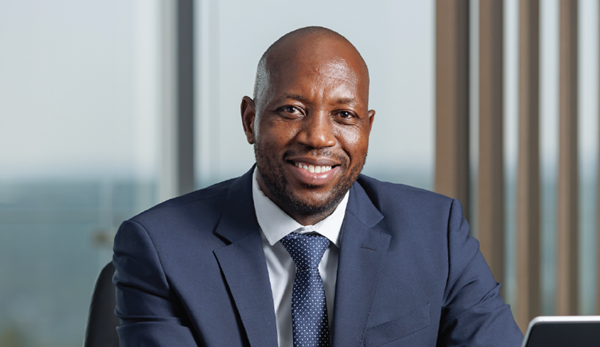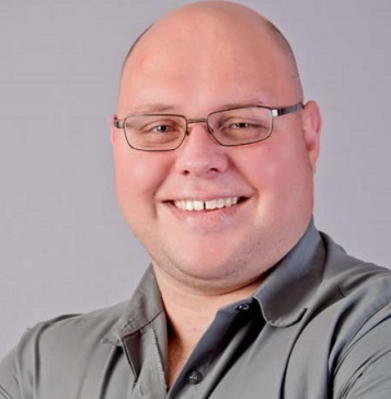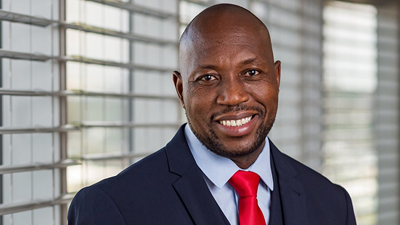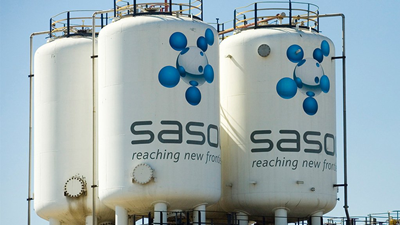

Over the past 15 years, South Africans have become accustomed to the steady decline of the country’s State-Owned Entities and Companies. In many cases, what were once bastions of strength have been reduced to runts in an unfavourable litter of failing companies.
It may sound a bit harsh, but the truth always is.
One of the largest State-Owned Companies that drove the local economy for many years was Sasol. However, the company faced a significant decline following years of mismanagement and an attritional environment that was not conducive to growth. Under the promising new leadership of Simon Baloyi, can the company’s fortunes be turned around, bringing a new dawn of hope?
Tough gig
Circularity and sustainability are understandably top of mind for Baloyi now again as he leads Sasol as its new group CEO. The 47-year-old chemical engineer is a Sasol “lifer,” having worked for the company for 20 years now. 15 of those were spent in Secunda—the location of its gargantuan synthetic fuels plant—where Baloyi moved up the ranks to become head of energy operations and technology.
Baloyi took up the top job as Sasol CEO in April this year. He joined at a critical time as he will have to grapple with the company’s future, setting it up for long-term success or, at the very least, survival.
The News24 article points out that Baloyi will present his first set of annual results as Sasol CEO on 20 August, where investors are keen to see if cashflows are sufficient to cover the group’s debt servicing costs.
When it comes to the longer-term investment case, all eyes will be on a Capital Markets Day planned for the second quarter of 2025, where Baloyi and the executive team will be expected to present credible transition plans.
As Baloyi rolls up his sleeves, the task ahead is huge. At around R130 a share, the Sasol stock is a long way off from the R400 plus price it garnered just two years ago.
While some investors see this as an obvious opportunity to buy, others are giving Sasol a wide berth.
For some, the business is undesirable, largely due to its highly pollutive operations—the Secunda plant, which produces synthetic fuels from coal, is the single largest source of greenhouse gas emissions in the world.
The article adds that execution is another concern for Sasol, which has also battled a strained balanced sheet ever since its disastrous Lake Charles Chemicals Project ran over time and billions of dollars over budget.
A coming gas supply cliff has added further uncertainty to the investment case as the group’s natural gas reserves offshore of Mozambique are dwindling, and plans to replace the feedstock have not yet solidified.
Amid all these challenges, Sasol also needs to transition to a cleaner company.
It’s already made public commitments in this regard, including a target to reduce its greenhouse gas emissions by 30% come 2030 and to achieve net zero emissions by 2050.
But to win over investors and other stakeholders, it needs to produce a credible plan outlining exactly how it will achieve this.
“What Sasol does is the best form of beneficiation. This is coal that you could have done nothing with. You can’t actually use it for anything, and it was beneficiated into incredible products,” he said, adding:
The News24 article points out that the impact is massive. It’s 500 000 direct and indirect jobs, it’s a cornerstone in the GDP, more than 5%. And it’s also supporting other industries.
The group is also a major taxpayer, and of course, a critical supplier of fuel into the inland market.
“But then you must ask: ‘Just because I have all that, must I remain like that?’ And my answer is no. The world is transitioning; we need to transition. And we need to have a clear plan,” he said.

Sasol CEO
Image By: Supplied
New challenges
The article adds that, at the forthcoming Capital Markets Day, Baloyi promises to provide a pragmatic plan for how Sasol will contribute to the energy system in South Africa.
“My hope for the company is to continue to do what it does now and more. And to do that, I need to think about what it would look like in 2040,” Baloyi says, noting he can’t see coal still playing a role at that point in time. “We have to find the balance, but we have to transition,” says Baloyi.
Already, Sasol is well-positioned to lead the development of green hydrogen in South Africa, although this is a longer-term ambition. With South Africa’s rich renewable resources, “the hydrogen narrative for South Africa is right; for me, hydrogen again is about timing,” Baloyi says.
As a case in point, Baloyi notes that Sasol already produces six tones of green hydrogen each day, and “no one wants to buy it because green hydrogen costs 10 times” that of hydrogen made with fossil fuels and without carbon capture.
The article points out that, as Baloyi looks to the future, he also cautions: “But I’m not a proponent of shutting down things without knowing what you’re going to build, when you’re going to build it, and how you’re going to build it.”
Baloyi says he welcomes the critiques of activists, the likes of which have been especially critical of the group’s emissions and the recent regulatory reprieve Government has granted Secunda in this regard.
“An extreme voice is not always the wrong voice. You always need to listen to and engage with it,” he says.
“But what I can tell you is that the market will move things faster than anyone can.”
The article points out that he also worries and engages Government about the broader energy transition away from coal.
“I’m worried for the country that if we don’t do it, come 2040, we’ll be left behind and can’t sell products in any market. And all that we did was criticise what we have, with no one ever putting their minds to what we need to start doing it and to look at how to incentivize it.”

Image By: Supplied
Avoiding the glass cliff
A relatively new concept in the business world is the glass cliff.
It is a phenomenon where the existing leadership of a failing or distressed company steps away from the company or is voted out by shareholders. New leadership that fits specific criteria is then brought in to lead the company; however, they are inadvertently being set up for failure. When these leaders fail, fingers will be pointed at their leadership style and decisions rather than the operating environment or the historical damage caused by the existing leadership as a reason for the inability to turn the company around. Yahoo! was a tech giant long before Google came on the scene. A series of bad decisions saw the company reach the verge of financial collapse. In response, Yahoo! appointed Marissa Mayer as CEO in 2012 after it lost significant market share to Google, which was shooting for the stars. Mayer was Yahoo’s! third CEO in a period of less than a year. She resigned in 2017 amidst mounting pressure after failing to change the company’s trajectory. Meyer’s failures were attributed to her leadership style rather than the attritional environment tech companies faced at the time.
Baloyi has an opportunity to make Sasol a household name once again in South Africa. He needs to focus on the basics that made the company successful in the past and blend them with growing global trends such as green energy. Finally, he needs to start severing many of the ties that beholds the company to the Government; Sasol needs to gravitate increasingly towards private partnerships and a private ownership model.
We live in interesting times.




